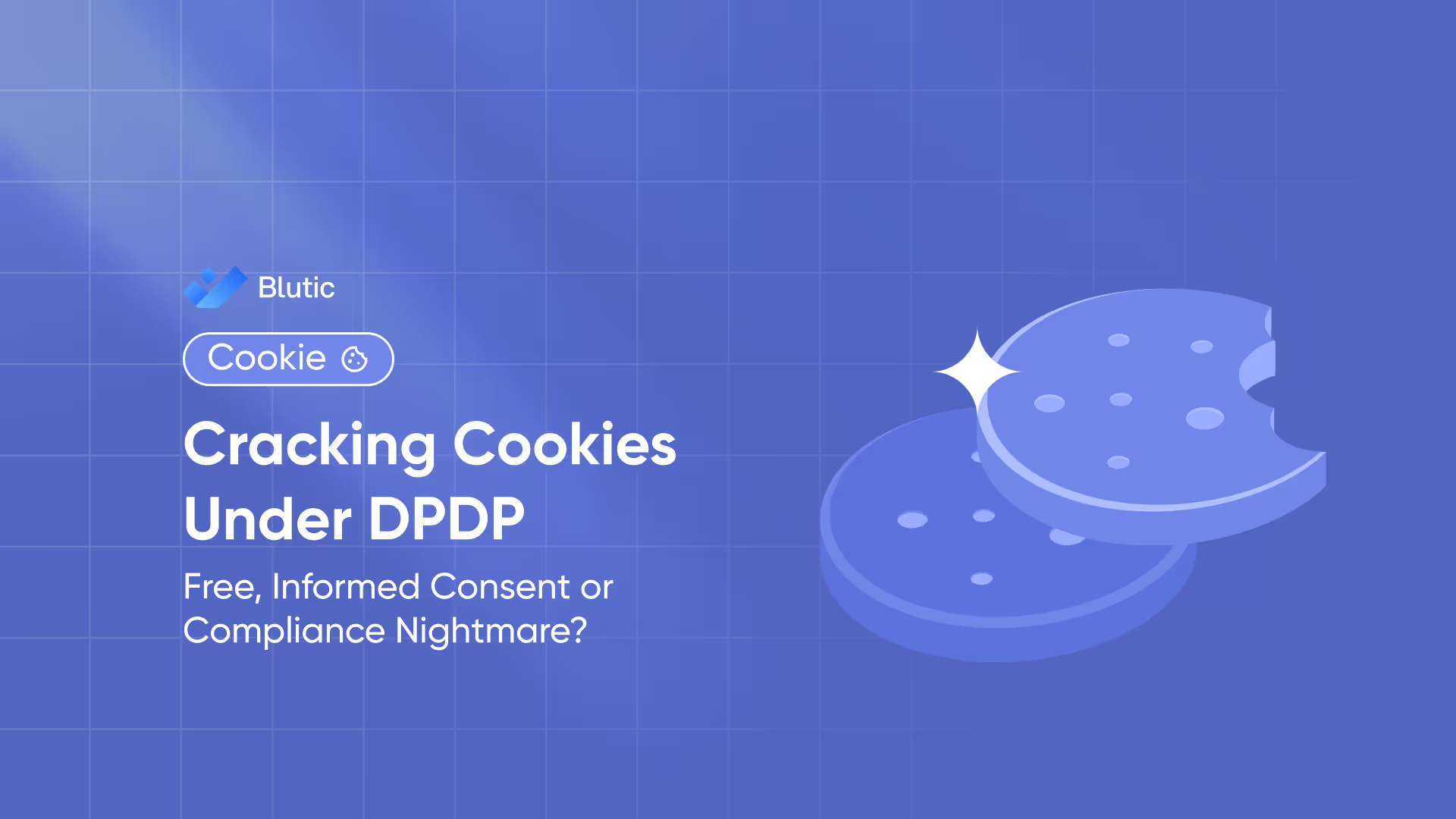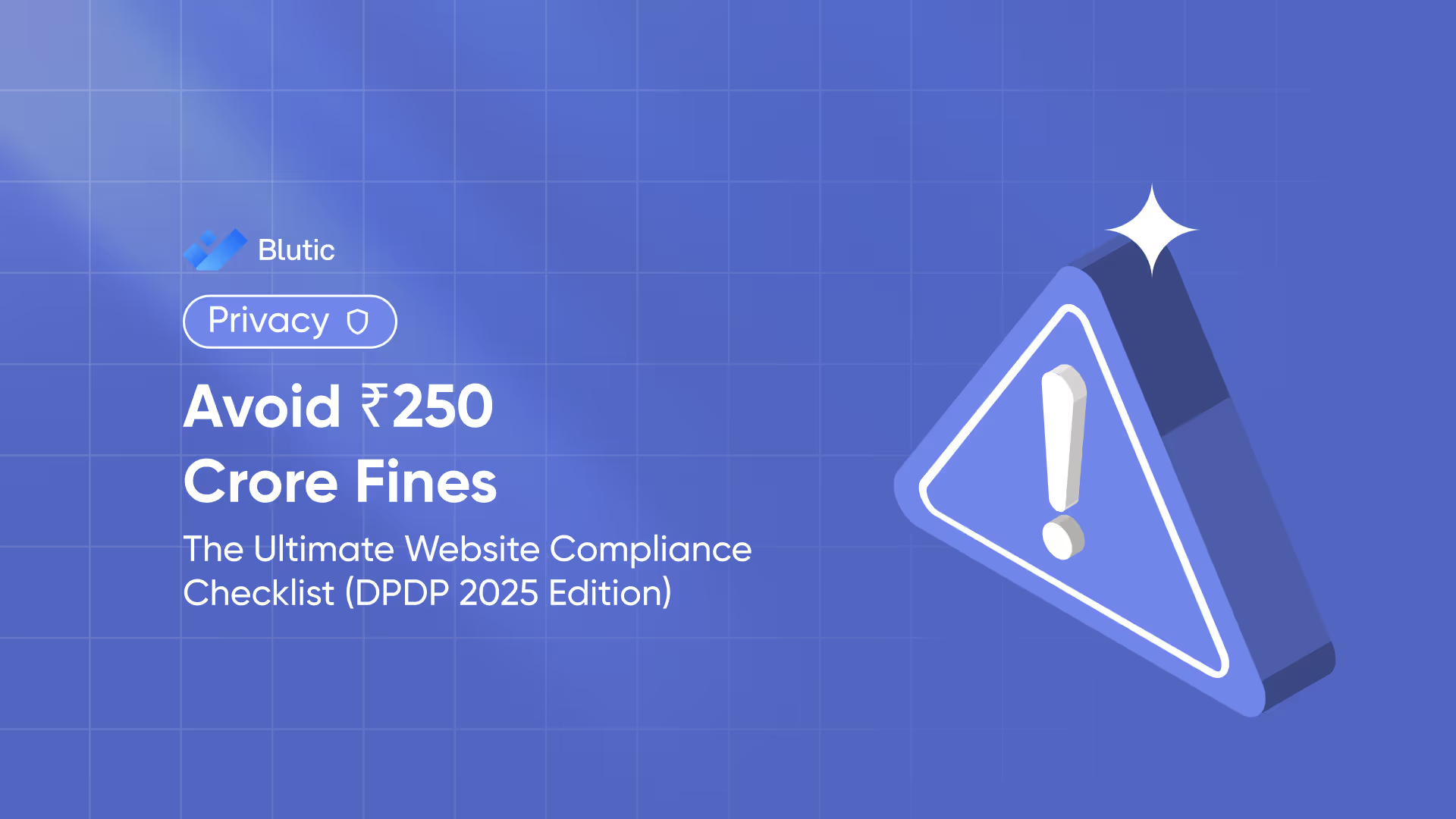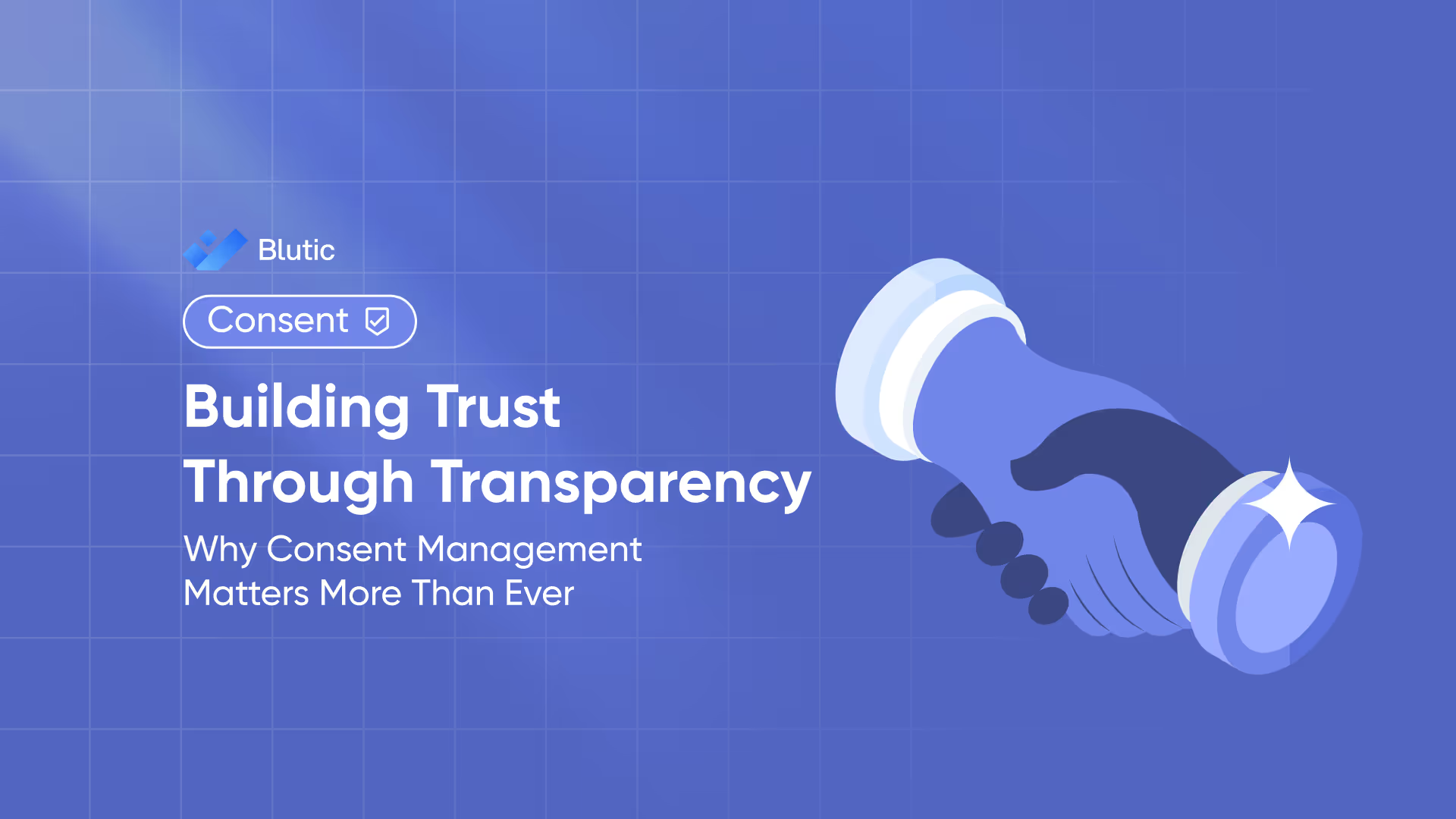Cracking Cookies Under DPDP: Free, Informed Consent or Compliance Nightmare?

Cracking Cookies Under DPDP: Free, Informed Consent or Compliance Nightmare?
Introduction
Cookies used to be harmless bits of data that made websites more personal. Today, under India’s Digital Personal Data Protection Act (DPDP 2023), those same cookies are under regulatory scrutiny.
The act’s promise of “free, informed consent” sounds simple until you realise how deeply cookies intertwine with analytics, ads, and personalisation. For digital-first brands, that means balancing user trust, transparency, and compliance without breaking UX.
In this post, we break down what DPDP means for cookie consent in India and how Blutic’s consent-management platform can turn complexity into clarity.
What Cookies Really Do and Why DPDP Cares
Cookies store information about users’ behaviour, devices, and preferences. While many are essential for website functionality, others track activities across sites creating detailed behavioural profiles.
Under the DPDP Act, any identifier that can link to a user directly or indirectly qualifies as personal data. That means cookies, trackers, and pixels all fall under the same umbrella of data processing that now requires explicit consent.
DPDP Act 2023: Consent Is the Core
India’s DPDP Act defines consent as free, specific, informed, unconditional, and unambiguous obtained through clear affirmative action.
Key clauses relevant to cookie consent:
- Notice Requirement: Users must be informed about data categories, purpose, and withdrawal rights.
- Free Consent: Websites can’t block services for users who reject non-essential cookies.
- Right to Withdraw: Users must have a clear way to change or revoke consent.
- Record Keeping: Data fiduciaries (the businesses) must maintain verifiable logs of consents obtained.
If your cookie banner doesn’t meet these standards, it’s not just bad design, it’s potential non-compliance.
Free Consent or Compliance Nightmare? Let’s Break It Down
1. Forced Opt-Ins Don’t Count
Banners that read “Accept all to continue” violate the principle of free consent. Users should have the option to decline non-essential cookies and still use core website functions.
2. Granular Control Is Mandatory
DPDP pushes for granular consent users to choose between essential, analytics, and marketing cookies individually, not as a bundle.
3. Proof Matters
A proper consent management system must store:
- What category was accepted
- When consent was given
- What notice was shown
- When it was withdrawn
4. Real-Time Withdrawal
Consent isn’t permanent. Withdrawal should be as easy as giving consent ideally via a persistent footer link (“Manage Preferences”).
5. Third-Party Risk
Advertising and analytics vendors often drop cookies before consent. Under DPDP, you, the data fiduciary, are liable even if a third-party script misbehaves.
The Blutic Way: Simplify, Automate, Comply
Blutic’s Consent Management Platform (CMP) helps organisations meet DPDP standards without sacrificing user experience.
🔧 Key features include:
- Automatic cookie categorisation (Essential / Functional / Marketing)
- Dynamic consent banners that adapt to regional regulations
- Multilingual notice templates in plain language
- Audit-ready logs for every consent or withdrawal
- Real-time preference dashboards that users can control
With Blutic, businesses can move from reactive compliance to proactive trust-building turning every consent into a promise of transparency.
Why This Matters Beyond Compliance
Cookies are more than compliance headaches they’re trust indicators. In an era where privacy equals brand equity, giving users genuine choice fosters long-term loyalty. By prioritising transparency, you don’t just avoid fines, you earn digital trust, improve SEO rankings (Google now favours privacy-compliant sites), and build a reputation for ethical data practices.
Conclusion: The Cookie Cracks Both Ways
The DPDP Act 2023 transforms cookie consent from a pop-up annoyance into a strategic trust signal. Yes, compliance can feel like a nightmare but with the right tools, it becomes an opportunity to lead. Blutic helps you decode, deploy, and demonstrate compliance making “free, informed consent” a lived reality, not a checkbox.
Frequently Asked Questions
More Blogs
Get the indise scoop: the latest tips, tricks, & product updates





